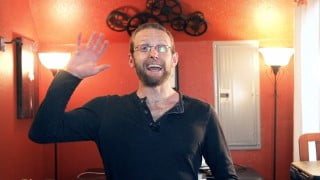Cinematic Lighting: Cinematography for Drama
Learn the art of cinematography with this comprehensive course. Discover how to block scenes, choose camera angles, and create cinematic lighting. Suitable for cinematography students, camera operators, and indie filmmakers looking to enhance their production values. Expand your knowledge and skills as a Director of Photography and elevate your filmmaking to the next level.
What you’ll learn
- How to block scenes for the maximum depth and production value
- How to choose camera angles and design camera movement
- Where to put your key light for the most cinematic look
- How to use LED, tungsten lighting and practical lamps
- How to use a light meter and false colours to correctly expose your image
- How to shoot in common locations like houses and restaurants
This course explains the role of a Director of Photography (aka DP, DOP, Cinematographer) on set, from collaborating with the director in blocking the cast and choosing the camera angles, to lighting the scene with depth and mood.
Across the four modules of the course, watch experienced DP Neil Oseman set up and shoot scenes in common contemporary locations: domestic banter in a sunny kitchen, a monologue in a dark bedroom, an awkward first date in a restaurant, and a walk-and-talk in an outdoor bar. Watch him try out different blocking and camera angles to get the most depth and interest in the frame, create movement using a slider and a gimbal, and work out the coverage needed to complete the scene. Then learn the secrets of cinematic lighting as he sets up LED, tungsten and practical lights to create a look. Witness the camera rehearsals through to the final take, then sit back and watch the final edited scene. Every step of the way, Neil explains what he’s doing and why, as well as the alternatives you could consider for your own films.
This is a follow-up to Neil’s best-selling Udemy course “Cinematic Lighting”, but it’s accessible to anyone with a grasp of the basic concepts of cinematography.
Who this course is for:
- Cinematography students
- Camera operators looking to move up to Director of Photography
- Corporate/industrial filmmakers looking to move into drama
- Indie filmmakers looking to increase their production values
- Directors looking to learn more about cinematography
User Reviews
Be the first to review “Cinematic Lighting: Cinematography for Drama”
You must be logged in to post a review.







There are no reviews yet.